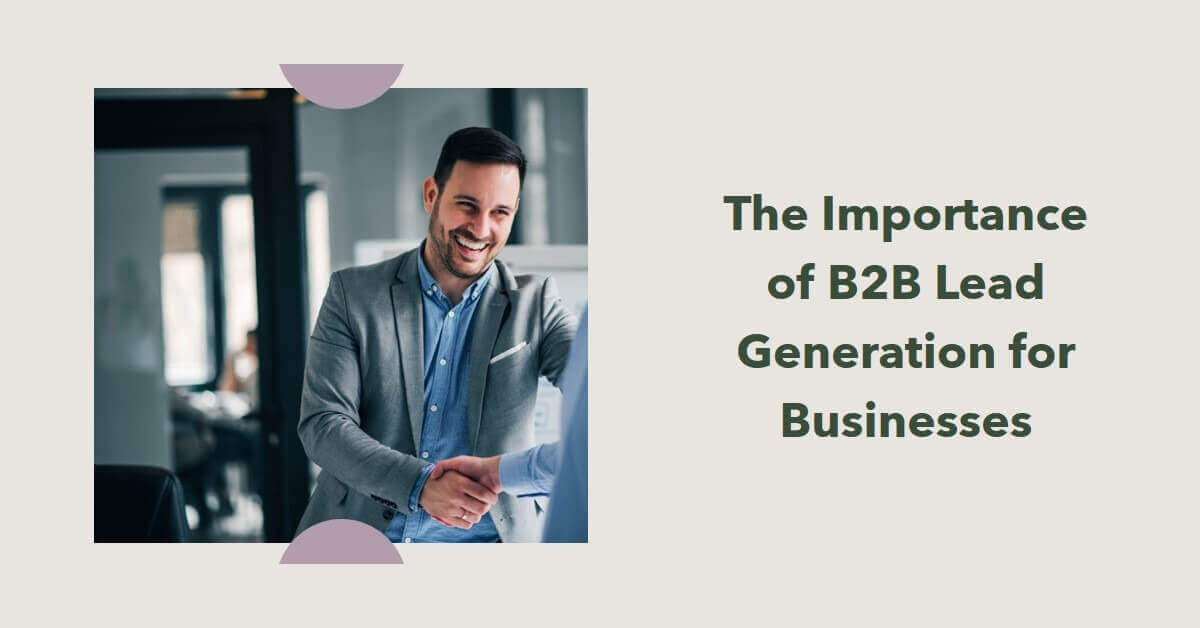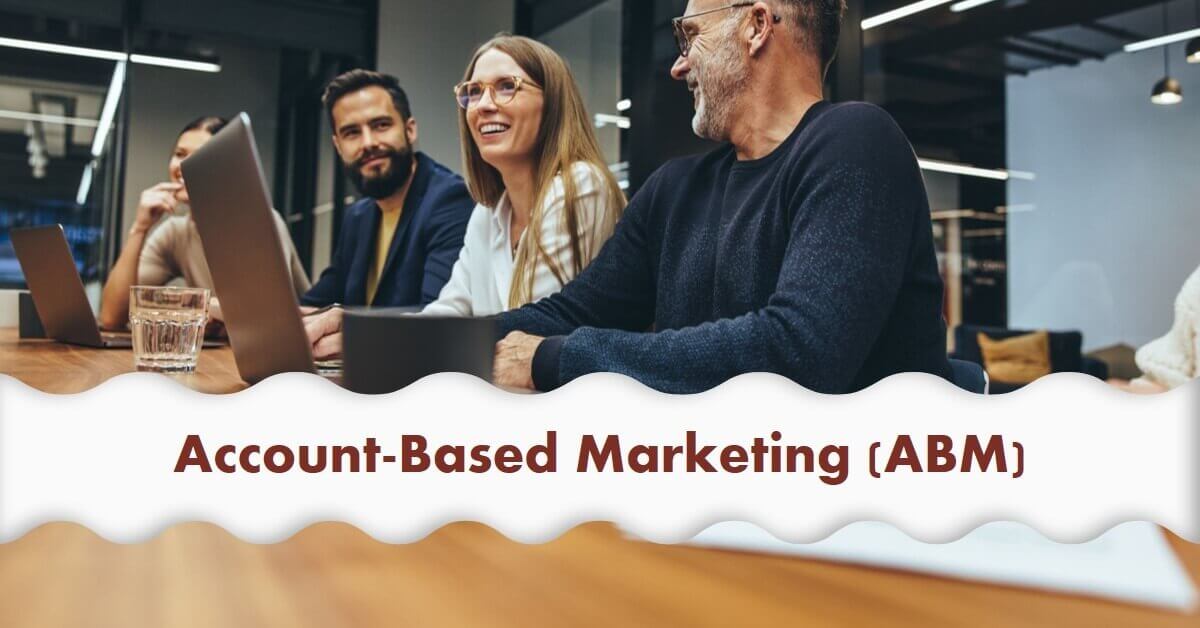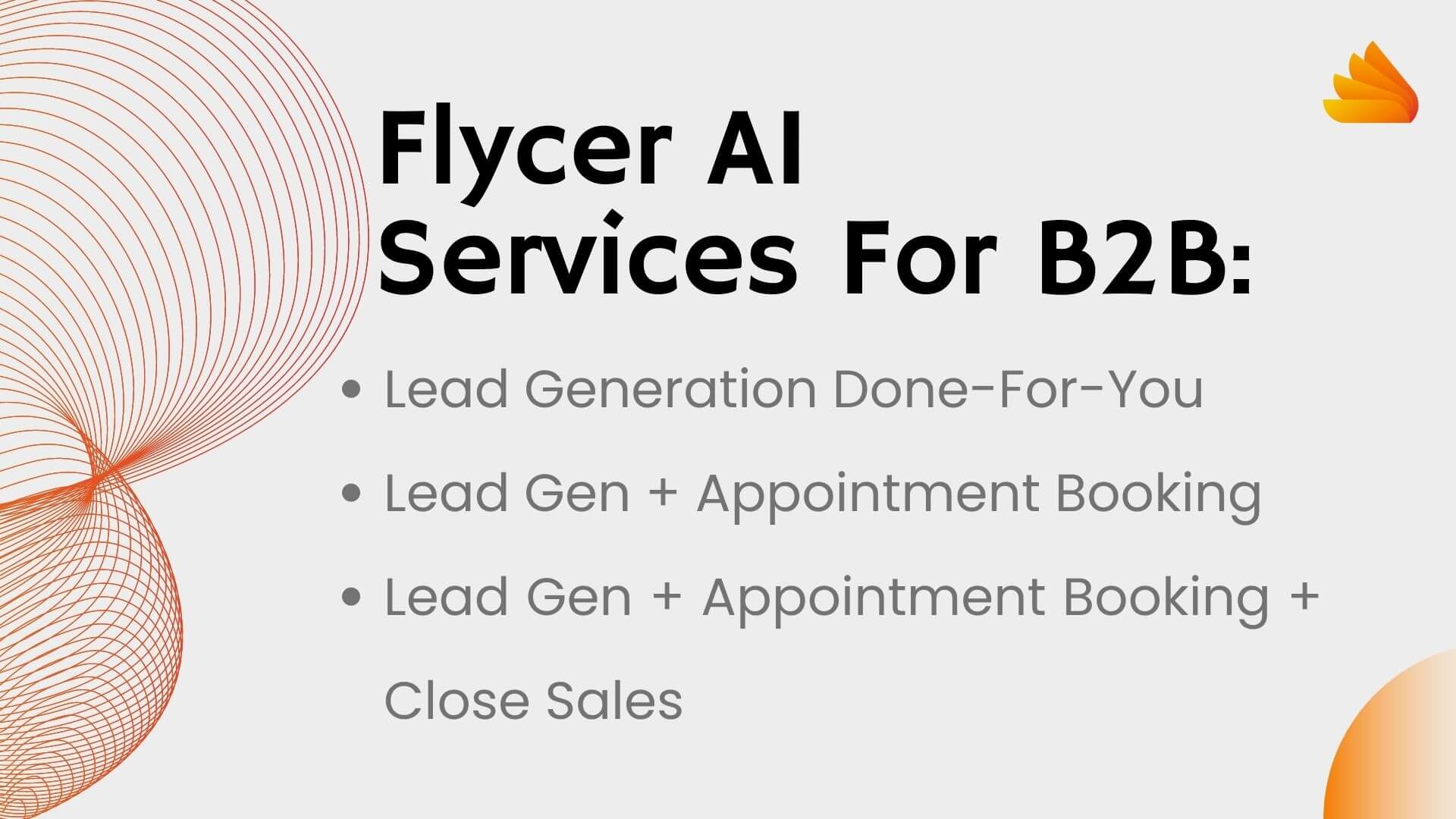Welcome to a comprehensive guide on B2B lead generation strategies. In today’s fast-paced and highly competitive business world, generating qualified leads is critical to overall success. With so many different marketing channels and tactics available, it can be challenging to know where to start or which methods will deliver the best results.
The Definition of B2B Lead Generation
B2B lead generation refers to the process of identifying potential customers or clients for your business’s products or services. The goal is to generate interest and gather information about these prospects, such as contact details, industry type, company size, etc., so that your sales team can engage with them further.
B2B lead generation is an essential part of any business’s marketing efforts because it allows companies to create a pipeline of potential customers who have expressed interest in what they have to offer. It helps organizations stay competitive in their respective industries and provides a foundation for sustainable growth over time.

The Importance of B2B Lead Generation for Businesses
One significant advantage of B2B lead generation is that it enables businesses to target their ideal audience with relevant messaging. By understanding the needs and pain points of potential customers, companies can create highly targeted campaigns that speak directly to their intended audience. Another benefit is that B2B lead generation helps organizations gather valuable data about their target market.
By analyzing this data, businesses can gain insights into buyer behavior and preferences which allows them to optimize future marketing efforts. Beyond these benefits, successful B2B lead generation strategies are crucial for long-term business success because they generate new opportunities for sales growth and provide a consistent stream of leads that can convert into paying customers over time.
An Overview of This Article
This guide will dive into high-level B2B lead generation strategies, including content marketing, email marketing, social media marketing, and search engine optimization. We’ll also explore niche subtopics such as account-based marketing, referral marketing, and event marketing. We’ll cover smaller details such as landing page optimization and follow-up processes.
By the end of this article, you’ll have a comprehensive understanding of the different B2B lead generation strategies available to you. You’ll be equipped with the knowledge required to develop a successful B2B lead generation plan that can help your business achieve its goals.
Client Services: Unlocking Your Business’s Potential
In today’s competitive business landscape, generation strategies have become crucial for companies looking to expand their customer base and drive revenue growth. B2B lead generation is particularly important for businesses that target other businesses as their customers. It involves identifying and attracting potential clients who are likely to be interested in the products or services offered by a B2B company.
In the next sections, we will discuss various high-level strategies and niche subtopics related to B2B lead generation and b2b sale. Now, let’s shift our focus to the client services that can help businesses unlock the full potential of their lead generation efforts.
1. AI Leads Service: Delivering Hot, Sales-Ready Leads
Generating high-quality leads is a time-consuming task that requires significant effort and expertise. With Flycer AI Leads Service, we take the burden off your shoulders by delivering hot, sales-ready leads directly to your inbox on an ongoing basis. These leads are individuals or businesses who have expressed genuine interest in your products or services and are ready to connect with your sales team. By leveraging advanced AI algorithms, we identify and qualify potential leads, ensuring that you receive only the most relevant and promising opportunities.
2. AI Appointment Setting: Streamlining Your Sales Process
Booking meetings with qualified prospects can be a challenging and time-consuming process. Our AI Appointment Setting service streamlines this process by leveraging artificial intelligence to automatically schedule appointments with leads who have shown interest in your business. We understand that your time is valuable, and our goal is to fill your calendar with meetings, allowing you to focus on what you do best: selling. Our AI-powered system intelligently handles appointment scheduling, ensuring that your sales team can connect with potential clients at the most convenient times.
3. AI Appointments & Closing Sales: Full Sales Support
For businesses looking for comprehensive sales support, our Close plans provide end-to-end lead generation, appointment setting, and sales closing services. With our AI Appointments & Closing Sales service, we take care of the entire sales process, from lead generation to closing deals. Our team of experienced sales professionals works closely with you to understand your business, identify ideal prospects, and deliver results. We combine the power of AI-driven lead generation with human expertise to provide a personalized and effective sales experience for your potential clients. By partnering with us, you can scale your business faster and achieve sustainable growth.
Why Choose Our Done For You Client Services?
1. Expertise and Experience: Our team of seasoned professionals has extensive experience in B2B lead generation. We understand the unique challenges and requirements of businesses targeting other businesses, allowing us to deliver tailored solutions that drive results and generate qualified lead and a potential customer time after time.
2. Advanced AI Technology: We harness the power of advanced artificial intelligence algorithms to optimize lead generation, appointment setting, and sales closing processes. Our AI-driven demand generation approach ensures accuracy, efficiency, and scalability, enabling you to maximize the return on your investment.
3. Customized Solutions: We recognize that every business is unique, and a one-size-fits-all approach does not work when it comes to lead generation. Our client services are designed to be flexible and customizable, aligning with your specific goals, target audience, and budget.
4. Time and Cost Savings: By outsourcing your lead generation efforts to our expert team, you can save valuable time and resources that can be better utilized on core business activities. Our efficient processes and automated systems enable you to focus on what you do best while we take care of generating high-quality leads and closing deals.

High-Level B2B Lead Generation Strategies
Unlocking the Power of LinkedIn for B2B Lead Generation
LinkedIn is a powerful platform for B2B lead generation, with over 700 million users worldwide. It is a social network designed specifically for professionals, making it an ideal place to connect with potential clients and partners. In this section, we will explore the various ways in which LinkedIn can be used to generate B2B leads.
1. Optimize Your Profile
The first step to generating B2B leads on LinkedIn is to optimize your profile. Your profile is your online resume, and it is the first thing that potential clients and partners will see when they search for you on LinkedIn. Make sure that your profile is complete, up-to-date, and professional-looking. Use a high-quality profile picture and a compelling headline that clearly states what you do and who you serve.
2. Build Your Network
The next step is to build your network. Connect with people in your industry, your target market, and your existing clients and partners. Join LinkedIn groups related to your industry and participate in discussions. This will help you establish yourself as an expert in your field and build relationships with potential clients and partners.
3. Publish Content
LinkedIn is also a great platform for publishing content. Share your blog posts, articles, and other content with your network. This will help you establish yourself as a thought leader in your industry and attract potential clients and partners to your profile.
4. Use LinkedIn Ads
LinkedIn Ads is a powerful tool for B2B lead generation. You can target your ads to specific industries, job titles, and geographic locations, making it easy to reach your target market. LinkedIn Ads can be expensive, but they can also be very effective if used correctly.
5. Use Sales Navigator
Sales Navigator is a premium LinkedIn tool that is designed specifically for B2B lead generation. It allows you to search for potential clients and partners based on specific criteria, such as industry, job title, and company size. You can also save leads and receive alerts when they change jobs or update their profiles.
In conclusion, LinkedIn is a powerful platform for B2B lead generation. By optimizing your profile, building your network, publishing content, using LinkedIn Ads, and using Sales Navigator, you find b2b buyers and can generate high-quality leads and grow your business.

Content Marketing: Creating Valuable Content to Attract Potential Leads
In today’s digital age, content marketing has become one of the most important lead generation strategies for B2B businesses. With the right content, businesses can educate, inform and provide value to potential leads.
The key is to create content that resonates with your target audience and provides them with solutions to their pain points. To attract potential leads through content marketing, it’s important to understand their wants and needs and how your business can help solve their problems.
This could be through thought leadership pieces such as whitepapers or industry reports that provide insights into trends or best practices in your field. It could also be through how-to guides or webinars that demonstrate your expertise in a particular area.
The best content marketing strategies are those that are well-planned, consistent, and data-driven. Businesses should have a clear understanding of their target audience’s preferences when it comes to format (e.g., video vs. blog posts) and distribution channels (e.g., social media vs email). By analyzing the performance of each piece of content, businesses can determine what type of content resonates most with their target audience.
Leveraging these b2b lead gen strategies can create b2b leads, sales, and b2b sales leads that are more qualified and likely to convert.

Email Marketing: Sending Personalized Emails to Targeted Prospects
Email marketing is a outbound lead generation tactic that remains one of the most effective ways for B2B businesses to generate leads. This is because it allows them to personalize messages based on a prospect’s stage in the buyer journey or other relevant factors such as job title or industry vertical. To succeed in email marketing for lead generation, B2B businesses must take a strategic approach. The first step is building a high-quality email list with targeted prospects who have opted-in to receive communications from you.
Once you have built an email list filled with potential leads, you can start designing highly personalized emails that speak directly to their needs. This could be as simple as sending a personalized email to potential leads with relevant content or offering them something of value such as a free demo or consultation.
Here’s a pro tip for a succesful lead generation strategy: To maximize the effectiveness of email marketing, businesses should segment their email list by lead status, industry vertical, and other relevant criteria. They can also use tools like A/B testing to refine messaging and understand what drives higher engagement and conversions.
Cold Email Outreach: Crafting Effective Cold Emails to Reach Out to Prospective Leads
Cold email outreach is too a powerful B2B lead generation strategy that involves sending unsolicited emails to prospective leads who have not previously interacted with your brand. While cold emailing can be an effective way to reach out to new prospects and generate leads, it can also be challenging to get a response from busy decision-makers who receive dozens of emails every day.
To increase your chances of success with cold email outreach, it’s essential to craft effective emails that grab the recipient’s attention, provide value, and encourage them to take action. Here are some tips for crafting effective cold emails for B2B lead generation:
1. Personalize your emails
Personalization of your potential lead is key to making your cold emails stand out from the dozens of other emails that your prospects receive every day. Start by addressing the recipient by name and using their company name in the subject line and body of the email. Use any relevant information you have about the recipient, such as their job title or recent company news, to tailor your message to their specific needs and interests.
2. Keep it short and sweet
Busy decision-makers don’t have time to read long, rambling emails, specially in b2b marketing . Keep your cold emails short and to the point, focusing on the key benefits of your product or service and how it can help the recipient solve a specific problem or achieve a specific goal. Use short paragraphs, bullet points, and clear, concise language to make your message easy to read and understand. Offer a lead magnet if needed.
3. Provide value
To encourage the recipient to take action, you need to provide value in your cold email. This could be in the form of a free trial, a demo, a case study, or a white paper that addresses a specific pain point or challenge that the recipient is facing. Make it clear how your product or service can help the recipient achieve their goals or solve their problems, and provide a clear call to action that encourages them to take the next step.
4. Follow up
Don’t be discouraged if you don’t get a response to your first cold email. Follow up with a polite, friendly reminder a few days later, and continue to follow up at regular intervals until you get a response. Persistence is key to success with cold email outreach, but be careful not to come across as pushy or aggressive. The key is being consistent with your follow-up.
5. Test and optimize
Like any marketing strategy, cold email outreach requires testing and optimization to achieve the best results. Experiment with different subject lines, email templates, and calls to action to see what works best for your target audience. Use data analytics to track your open and response rates, and use this information to refine your approach over time.
In conclusion, cold email outreach can be a highly effective B2B lead generation strategy when done correctly. By personalizing your emails, keeping them short and sweet, providing value, following up, and testing and optimizing your approach, you can increase your chances of success and generate more leads for your business.

Social Media Marketing: Utilizing Social Media Platforms to Reach Out to Potential Leads
Social media marketing has become an essential part of B2B lead generation strategies in recent years. With over half the world’s population now using social media platforms, there is significant potential for businesses to reach out and connect with potential leads.
However, it’s important for businesses to use social media wisely and strategically. The key is understanding which social media platforms are most relevant for your target audience and using them effectively.
For example, LinkedIn is often used by B2B businesses looking to generate leads because it provides a platform for professional networking and thought leadership content. In contrast, Instagram may be more effective at building brand awareness than directly generating leads.
To succeed in social media marketing for lead generation, businesses must develop engaging content that resonates with their target audience. This could include thought leadership pieces such as blog posts or whitepapers that demonstrate expertise in an industry area or visual content such as infographics or videos showcasing products or services.

Search Engine Optimization (SEO): Optimizing Website and Content for Search Engines
Search engine optimization (SEO) remains one of the most popular ways for B2B businesses to generate organic traffic from search engines like Google. By optimizing website design elements such as metadata or URL structure alongside high-quality content creation that includes keywords phrases commonly searched by your target audience; you can rank higher on search engine results pages (SERPs).
To ensure success with SEO strategy in lead generation, businesses should research and understand the keywords and phrases that potential leads are searching for to find their products or services. These keywords should be incorporated into website content such as blog posts, product pages, and landing pages.
Another important aspect of SEO is off-page optimization, which includes building quality backlinks through link-building strategies like creating content that other websites want to link to. Overall, an effective SEO strategy requires a long-term approach with consistent effort over time.
Niche Subtopics on B2B Lead Generation Strategies

Account-Based Marketing (ABM): Targeting specific accounts with personalized messaging and campaigns
Account-based marketing is a highly targeted approach to B2B lead generation. Rather than casting a wide net to attract leads, ABM focuses on a select number of high-potential accounts and creates personalized marketing campaigns specifically tailored to them.
The goal of ABM is to create a one-to-one relationship with each account, nurturing them through the sales funnel until they become customers. To implement an effective ABM strategy, businesses need to first identify their ideal target accounts based on factors such as industry, company size, and revenue.
From there, they can create customized messaging that speaks directly to the pain points and needs of those accounts. This can include targeted ads, personalized email campaigns, and even direct mail.
One key advantage of ABM is that it allows businesses to focus their resources on prospects that are most likely to convert into customers. By creating tailored messaging for each account, businesses can increase the effectiveness of their marketing efforts and ultimately drive more revenue.
Referral Marketing: Encouraging current customers or partners to refer new business
Referral marketing involves leveraging the power of existing happy customers or partners to generate new leads for your business. The idea behind referral marketing is that people are more likely to trust recommendations from someone they know than from a brand they’ve never heard of before.
To implement an effective referral marketing strategy, businesses need to first identify which customers or partners are most likely to refer new business. This could involve creating incentives for referrals such as discounts or other perks.
Another key element of successful referral marketing is making it easy for customers or partners to refer others. This could involve providing them with pre-written emails or social media posts that they can share with their networks.
Overall, referral marketing can be a highly effective and cost-efficient way to generate new leads. By leveraging the power of word-of-mouth marketing, businesses can tap into a powerful source of potential customers.
Event Marketing: Hosting or attending events to generate leads and network with potential clients
Event marketing involves using events such as trade shows, conferences, and webinars to generate leads and connect with potential clients. The goal of event marketing is to create an opportunity for businesses to showcase their products or services in front of a highly targeted audience.
To implement an effective event marketing strategy, businesses need to first identify which events are most relevant to their target audience. This could involve researching industry-specific trade shows or attending networking events.
Once at the event, businesses need to create a compelling presentation or booth that will attract attendees and showcase their offerings. This could involve creating engaging demos or presentations that highlight the unique value proposition of their product or service.
One key advantage of event marketing is that it allows businesses to connect with potential customers in-person, forming stronger relationships than would be possible through online channels alone. Additionally, by attending industry-specific events, businesses can position themselves as thought leaders in their field and gain valuable exposure among key decision-makers.
There are many niche subtopics within B2B lead generation strategies that can help businesses drive more revenue. By implementing tailored approaches like account-based marketing, referral marketing, and event marketing, companies can reach high-potential prospects in more effective ways than through traditional methods alone.
Landing Pages: Creating Optimized Landing Pages for Specific Campaigns or Offers
Landing pages are specific web pages that a user lands on after clicking on an advertisement or call-to-action (CTA). The purpose of these pages is to convert the prospect into a lead by offering something valuable in exchange for their contact information, such as an eBook or free trial. The landing page should be optimized to increase the likelihood of conversion by having clear and concise messaging, a visually appealing design, and minimal distractions.
One important element of creating effective landing pages is ensuring that they are customized to match the campaign or offer that brought the prospect there. For example, if an email campaign is promoting a free trial of a specific software product, the landing page should reflect that offer and provide more details about the benefits of signing up for the trial.
By aligning the messaging between the campaign and landing page, prospects are more likely to convert. Another key aspect of optimizing landing pages is ensuring they load quickly and are mobile-friendly.
A slow-loading or difficult-to-navigate landing page can cause prospects to lose interest and abandon their attempt to convert into a lead. By keeping loading times fast and optimizing for mobile devices, businesses can increase their chances of capturing leads from all types of devices.

A/B Testing: Testing Different Variations of Campaigns or Messaging to Optimize Results
A/B testing, also known as split testing, involves creating two variations (A & B) of marketing campaigns or messaging in order to determine which version performs better based on specific metrics such as click-through rates or conversions. This method helps businesses optimize their campaigns by identifying which elements are most effective at driving results. To conduct A/B testing effectively, it’s important to only test one variable at a time.
For example, if testing two versions of an email campaign’s subject line with different wording options (“Free Trial” vs. “30-Day Trial”), other elements such as the email body and CTA should remain consistent for accurate results. Also, it’s important to have a large enough sample size to ensure that the results are statistically significant.
By continuously testing different variations, businesses can optimize their campaigns and messaging over time to improve their chances of success. A/B testing can also help identify trends and patterns in customer behavior that may not have been apparent otherwise, leading to further improvements in marketing strategies.

Follow-up Processes: Developing a Structured Process for Following up with Leads
While generating leads is important, following up with those leads in a timely and effective manner is equally crucial. One way to ensure that leads are not lost is by developing a structured follow-up process.
This process should outline specific steps, timelines, and responsibilities for following up on each lead. One important aspect of follow-up processes is setting realistic expectations between sales and marketing teams regarding what qualifies as a lead versus just a prospect.
By agreeing on criteria such as budget or timeline requirements upfront, both teams can work together more effectively to identify high-quality leads that are worth pursuing. Another key factor in effective follow-up processes is utilizing automation tools such as email workflows or CRMs (customer relationship management software).
These tools can help streamline the follow-up process by automating tasks such as sending personalized emails or scheduling follow-up calls based on predetermined timelines. By developing a structured follow-up process and utilizing automation tools where possible, businesses can increase their chances of converting leads into customers while also providing a positive experience for prospects during the sales process.
Conclusion:
B2B lead generation is a critical aspect of any successful business. It involves identifying and nurturing potential customers, which can significantly impact the growth and profitability of a company. In this article, we have delved into various B2B lead generation strategies that can be used to generate leads, increase conversions, and drive revenue.
We started by highlighting the importance of B2B lead generation for businesses. We then provided an overview of high-level B2B lead generation strategies such as content marketing, email marketing, social media marketing, and search engine optimization (SEO).
These methods are essential for generating top-of-funnel leads that can be nurtured throughout the sales process. In niche subtopics on B2B lead generation strategies, we discussed account-based marketing (ABM), referral marketing, and event marketing.
Each of these strategies is tailored to specific audiences or scenarios and can be used to supplement broader tactics. In small details on B2B lead generation strategies section we covered landing pages optimization for specific campaigns or offers; A/B testing to test different variations of campaigns or messaging to optimize results; follow-up processes with structured plans for following up with leads.
Developing an effective B2B lead generation strategy is essential for growing your business. By utilizing a combination of the tactics discussed in this article, you will be able to attract and nurture high-quality leads while increasing conversions and driving revenue.
Remember that every business is unique; there is no single approach that works best for everyone. However, by continuously reviewing your strategy’s performance data metrics while iterating with new approaches learning from your mistakes might provide significant results over time.






